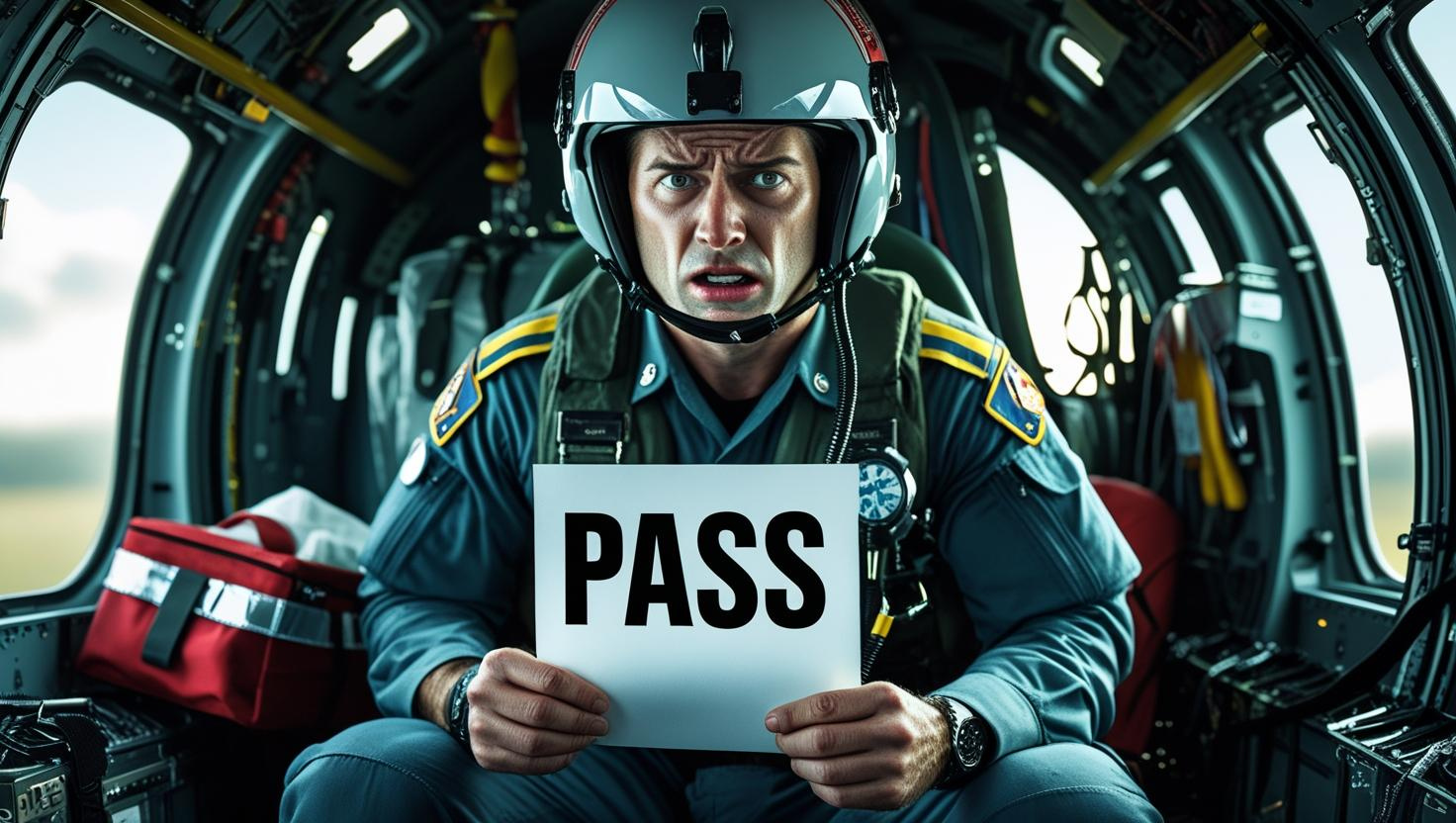A Radical Shift – Rethinking Critical Care Education for Flight Providers
Beyond the Sirens Image, All Rights Reserved
Introduction: A Dangerous Oversight
In the high-stakes world of critical care transport, one would assume that rigorous clinical standards and practical training are prerequisites before stepping into a rotorcraft or fixed-wing aircraft. Yet the current educational paradigm for flight paramedics and nurses says otherwise. Unlike EMTs or Paramedics, who must complete both didactic and clinical training through accredited institutions, critical care board certification has no universal requirement for hands-on experience. This article is not an indictment, but a call to reexamine the glaring absence of practical standards in critical care education.
Section 1: The Current Paradigm, A Test, Not a Process
Today, one can purchase an online prep course, memorize content, and sit for the FP-C or CCP-C exams, arguably the highest clinical standards for paramedics in the United States, without any practical clinical experience in critical care transport. This is a sharp contrast to foundational EMS training:
"You wouldn't let someone become a Paramedic without touching a patient. Why is that acceptable for flight medicine?"
Even nursing and medical professions require clinical rotations before licensing. Yet a future flight provider may board their first flight without ever having touched a ventilator outside of a classroom.
Source: National Registry of Emergency Medical Technicians (NREMT). EMT/Paramedic requirements. https://www.nremt.org
Section 2: Ego, Experience & False Readiness
Some argue: “But I’m an experienced ICU nurse” or “I’ve done 10 years in a 911 system.”
Good. That’s worth honoring. But it does not guarantee success in a rotorcraft at 2,000 feet with limited backup, compressed timelines, and an unstable patient. Flight is unforgiving. Ego can be fatal.
"There are far better men than me who died doing this job. Respect the role." — Veteran Firefighter”
Ego is often a veneer hiding fear and uncertainty. In flight, ego causes silence when communication is needed, hesitation when action is required, and defensiveness in the face of feedback.
Source: Gaba, D. M. (2004). The future vision of simulation in health care. Quality and Safety in Health Care, 13(suppl 1), i2-i10.
Section 3: A Dangerous Gap — The Absence of Clinical Baselines
Unlike paramedic or nursing school, flight providers do not require:
Precepted clinical hours
Internships on rotor or fixed-wing aircraft
Procedural skills testing under simulated stress
Each agency sets its own expectations, often determined by their accreditation body — CAMTS, EURAMI, or none at all. The result? A disjointed system where one provider may have weeks of hands-on experience before solo flight, while another may have none.
Case Study: Survival Flight 1526 Crash (2008)
In 2008, Survival Flight 1526 crashed in Michigan due to a combination of pilot error and poor crew resource management. The NTSB highlighted a lack of standardized training and scenario-based crew drills as contributing factors.
Source: National Transportation Safety Board. (2009). Crash report: Survival Flight 1526.
Section 4: Certification vs. Qualification
Board certifications like FP-C and CCP-C are not inherently flawed. They are tough. In fact, they should remain so. But the idea that cognitive success equates to clinical readiness is a false narrative. You cannot intellectually prepare for:
A high-altitude hemorrhage
Mid-flight rapid sequence intubation
Postpartum hemorrhage on a rural helipad
Yet these are real scenarios that play out every day. And they require real training to master.
"The single biggest problem in communication is the illusion that it has taken place." — George Bernard Shaw
Source: Papadakis, M.A., et al. (2005). Disciplinary action by medical boards and prior behavior in medical school. New England Journal of Medicine, 353(25), 2673–2682.
Chapter 5: A Call to Arms — What Needs to Change
Standardized Clinical Requirements:
Mandate clinical ride-alongs or preceptorships on rotor/fixed-wing craft prior to board testing.
Mandatory Procedural Skill Validation:
Centralized documentation and assessment of ventilator management, pharmacology, RSI, etc.
Simulated Flight Environment Testing:
Use of mobile simulation labs to replicate stressors in pressurized, noisy, and space-restricted environments.
“In aviation and medicine alike, the cost of complacency is lives.”
Chatper 6: Our Role at Beyond the Sirens
We are not claiming to possess the magic formula, no one should. But we refuse to accept the current standard as “good enough.”
We advocate for:
Hybrid models: Didactic plus practical field application
Mentorship: Students partnered with seasoned flight providers
Tactical simulations: High-fidelity, scenario-based training
We don’t want to replace existing CCT programs. We want to complement them, build on them, and elevate the profession.
Final Thoughts: It’s Time to Get Radical
You may think this stance is extreme. But in a world where our patients hang in the balance, extreme caution is wisdom. We do not take this lightly. Our profession is too important.
“Just because you’ve never had a mission go wrong, doesn’t mean the next one won’t.”
The call is simple: Raise the standard.
And to those preparing for flight: check your ego, train harder than the test, and never forget — this job will demand everything of you. Give it nothing less.
References:
National Registry of Emergency Medical Technicians. (2023). https://www.nremt.org
Gaba, D. M. (2004). The future vision of simulation in health care. Quality and Safety in Health Care, 13(suppl 1), i2-i10.
National Transportation Safety Board. (2009). Crash report: Survival Flight 1526.
Papadakis, M.A., et al. (2005). Disciplinary action by medical boards and prior behavior in medical school. New England Journal of Medicine, 353(25), 2673–2682


